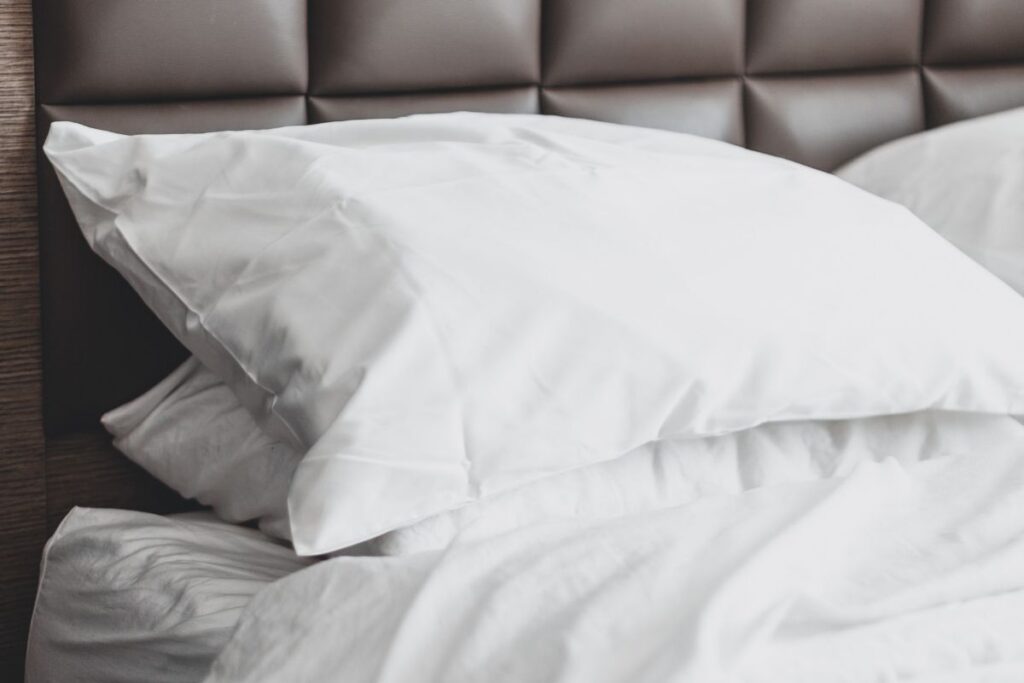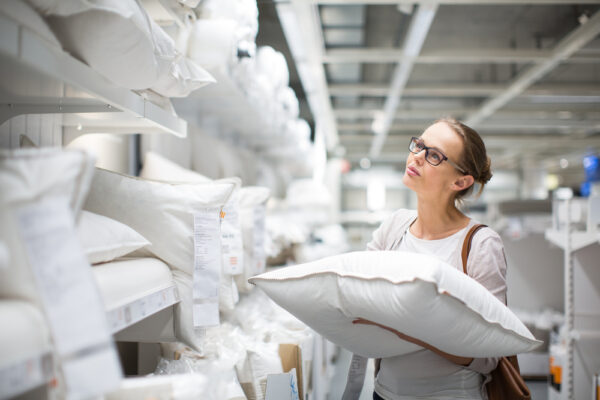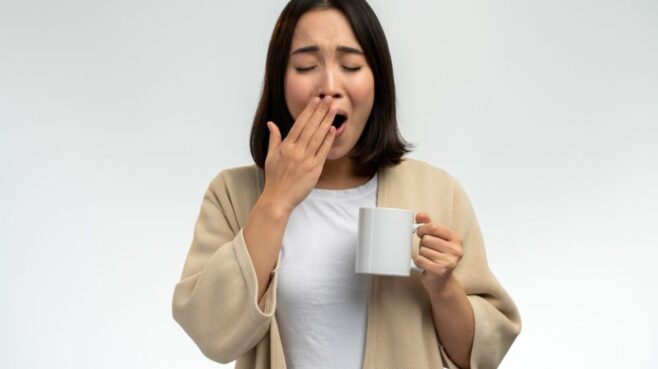A good pillow can make a great difference to your quality of sleep, while an old one can disrupt your night’s rest. How would you know if a pillow is old? One way to tell is the presence of yellow coloured stains. You may have noticed that with some of your pillows, but why do pillows turn yellow?
In this post we look at the main reasons behind yellow pillow stains, and how you can tell if your pillow is still alright to sleep on. Normally your pillow should be replaced between one to two years. If yours is older than that with countless yellow or brown stains, then it’s definitely time to get a new one.
Why Do Pillows Turn Yellow?
There are a few reasons behind the yellow stains on your pillow, but sweat is the biggest contributing factor. Even if we aren’t always physically aware of it, the majority of us sweat while we sleep. Over time this sweat can build-up and seep through your pillowcase to the pillow causing yellow stains to appear.
Apart from sweat, other forms of body moisture can also make your pillow stain. Those include oils from your skin, as well as drool. Add all sorts of serums, moisturisers and other various products you put on your hair and face, and the yellow stains on your pillow are just inevitable.
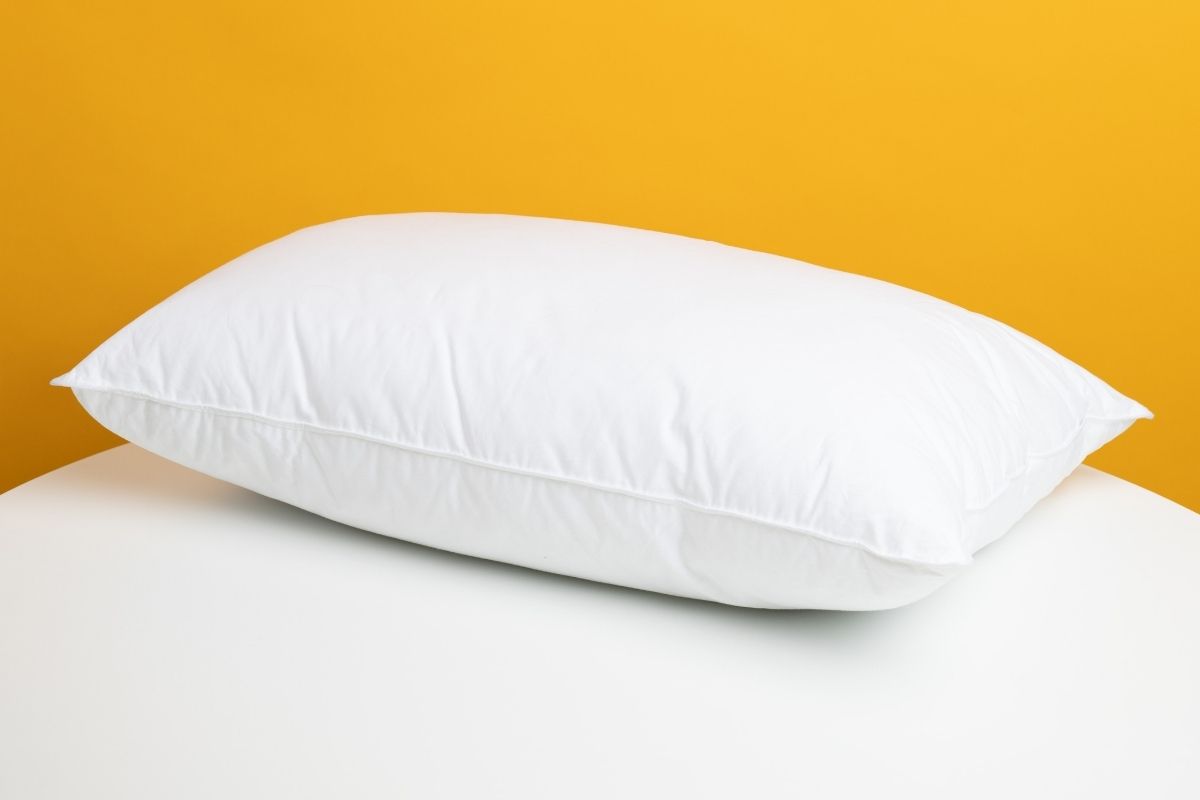
Is Sleeping on Pillows with Yellow Stains Healthy?
If your pillow is old and heavily stained, we’d certainly recommend looking for a new one. Especially if your pillow hasn’t been washed since you purchased it or you don’t use a pillow protector.
If that’s the case then chances are that along with sweat and oils build-up, dust mites and other allergens might also be lurking between the fibres in your pillow. The moisture from sweat and natural oils makes the inside of your pillow a breeding ground for all kinds of bacteria. For people who suffer with asthma or allergies this is certainly less than ideal.
Additionally, your pillow loses its shape from wear which can cause neck pain. If you wake up in pain and feel like you can’t move your neck then it’s definitely time to replace your old pillow.
Can You Prevent Yellow Stains on Pillows?
You can’t completely stop yourself from sweating during the night, however, there’s a few things you can do to protect your pillows from staining. The first and most effective thing to do is get a pillow protector. Similarly to a mattress protector, these add an extra layer between your pillow and sweat and other moisture.
They can be washed together with the rest of your bed linen, making them a low maintenance solution. You can get a few of them so that you have a clean one available when changing the bedsheets.
As well as that, avoid going to bed with wet hair as all of the moisture will seep right through and over time turn your pillow yellow. Another thing to avoid is heavy oil-based face products as part of your night-time routine. And of course, always remove your make-up when getting ready to hit the hay.
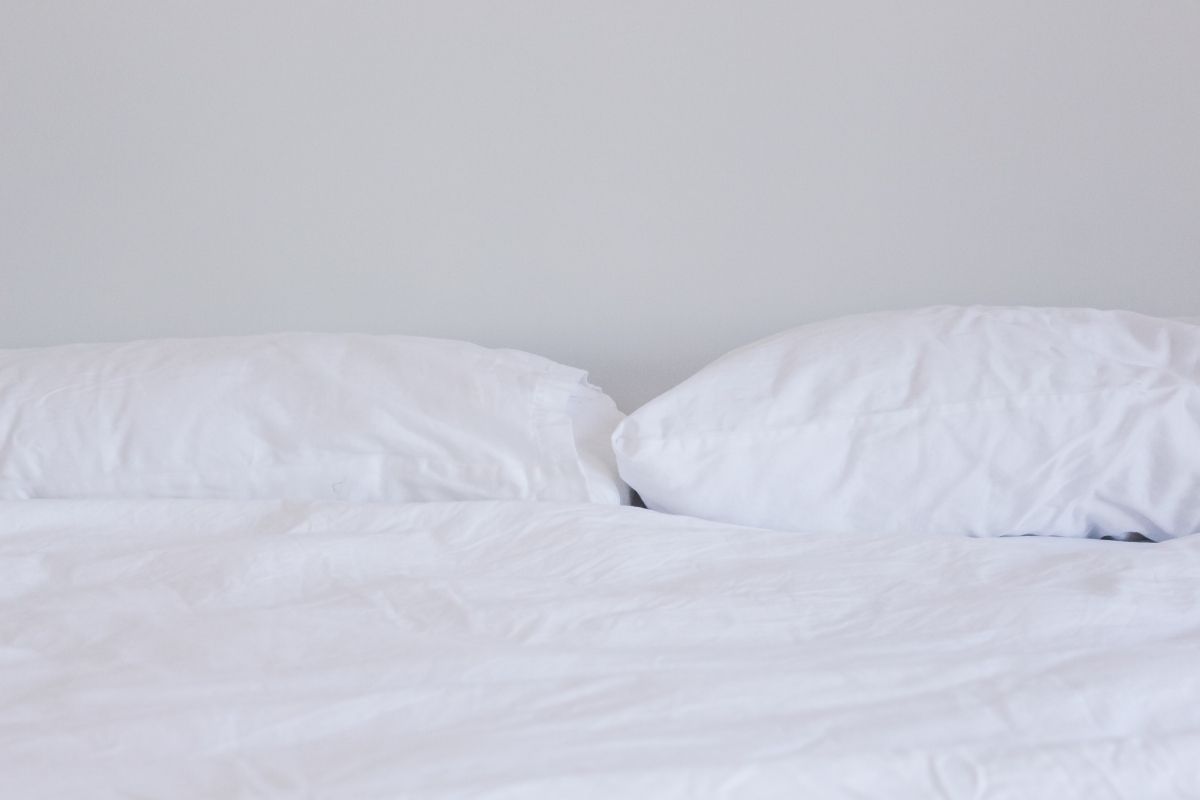
How to Get Rid of Yellow Pillow Stains?
Unfortunately, you can’t completely remove yellow stains, especially old ones that have really bedded in. There are ways to partially reduce them though. When it comes to washing yellow stained pillows (as well as any bedding) the first thing you should do is read the instructions.
On the side of your pillow you should find a small fabric tag. On it you’ll find all the information on how to clean and dry your pillows. If your pillow can be machine washed, spot-treat all the stubborn stains beforehand for better results. You can find different stain removers and creams which can be very effective. Alternatively, you can mix your own paste using baking soda and water.
You might find that some cleaning experts also recommend using washing detergent mixed with bleach for removing tough yellow pillow stains, but this method can be tough on your pillows.
Conclusion
So why do pillows turn yellow? The main culprits for staining are sweat and oils finding their way into your pillow. However, face and hair products, drool and water from sleeping with damp hair can also contribute to the yellow stains.
The most efficient way to protect your pillows is to use a pillow protector. These stop moisture and dust mites from getting into your pillow, helping you get more use out of it. Cleaning and spot-treating can help you get rid of some staining on your pillow, but make sure you read the manufacturer’s instructions.
If you’ve decided it’s time to change your old pillow you can read our guide to pillow sizes or our top pillows for 2021 to give you some ideas. Our team is also available if you need additional advice. Simply contact us and we’ll be able to answer any questions you may have.
